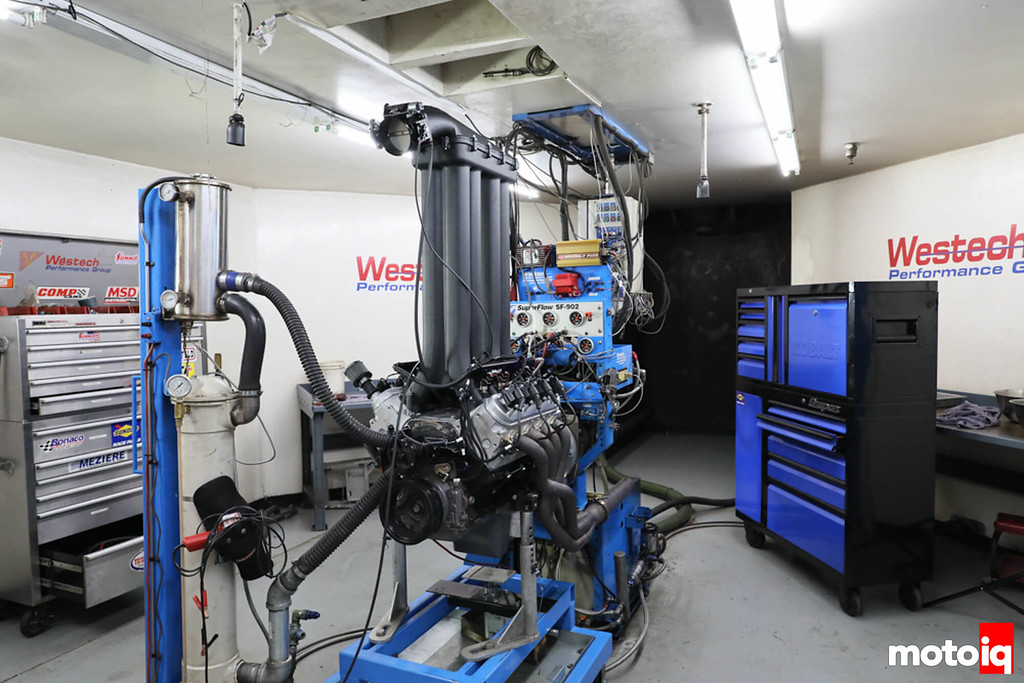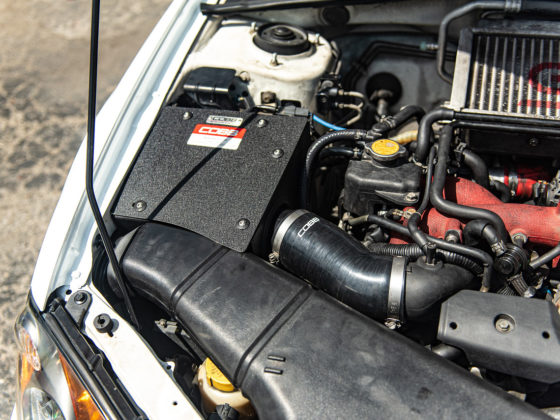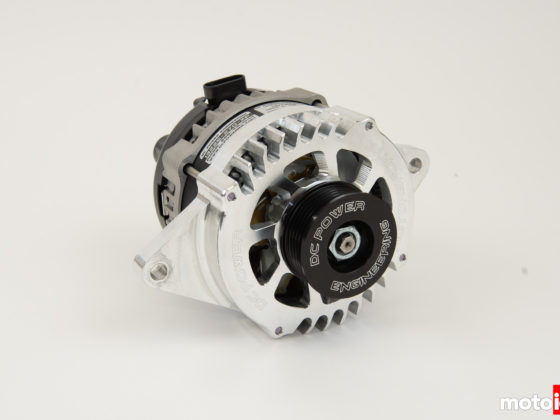
Peak horsepower, 464.5, occurred at 5,100rpm and soon after it ran head-first into a wall. The airflow capability of the runners pegged and power fell off rapidly. Brulé ended the pull at 5,500rpm. While the Sky-Ram rewarded with massive torque gains and a robust power curve, it was down a whopping 71.9 peak horsepower from the tried and true Hi-Ram combination. The Sky-Ram belted out 510.8 lb-ft of peak torque at a mere 3,700rpm, a 53.8 lb-ft improvement in peak torque over the Hi-Ram and 108 lb-ft improvement at the same, 3,700rpm. We wonder how the Sky Ram would perform with a cam that was a better match for the Sky Ram’s lower rpm tuning.

Runner Length Explained
At this point, you may be asking. “How does runner length affect the powerband?” To answer this question and deliver some context to the test results, we must first define runner length. In internal combustion engines, runner length is considered the distance from the intake port to the source of air entering all cylinders of the engine. On this LS, each cylinder shares a common plenum in the intake manifold, so we will define the runner as the distance from the intake port to the plenum.
As an engine operates, pistons move downward in their bores as the intake valves open. This draws in a mixture of air and fuel and creates a moment of low pressure in the runner. As the piston begins the compression stroke, the intake valve closes, and the volume of high-speed air in the runner that the cylinder didn’t ingest that cycle slams into the back of the closed valve face, creating a high-pressure wave. This high-pressure wave of air reflects backward up the runner and subsequently back down the port. These pressure waves endlessly bounce up and down the runner until a point occurs at a specific engine speed where that high-pressure airwave synchronizes with the opening of the intake valve. This is the tuned length and it is much like how wind musical instruments work. This serendipitous occurrence provides a boost of cylinder filling that helps the engine operate with increased volumetric efficiency, which is the ratio of the physical displacement of the engine to the volume of air/charge it is actually ingesting. For example, a 350ci engine operating at 100% volumetric efficiency (VE) would ingest 350ci of air per cycle. On well-tuned high-performance engines, it is possible to see VE numbers above 100%.
By manipulating the runner length (as well as countless other variables) engineers are able to alter the point in the powerband where that wave aligns with the intake valve opening and hence where the engine will perform most efficiently. Longer runners tend to fix this point at lower engine speeds, while shorter runners push it toward higher engine speeds.
The Takeaway
So there you have it, folks. Long intake runners certainly deliver on their promise of increased low-end torque. In fact, the Sky-Ram intake would be a lot of fun in a hot rod. That tire-shredding torque would make for both smiles and smoky burnouts, assuming you don’t mind peeling back the sheet metal of your hood to fit it. However, this exercise in theory and lighthearted fun is not intended for production. For the rest of LS enthusiasts out there–the horsepower obsessed, and time-slip oriented kind–the Hi-Ram remains the better path to power.
Now Holley we need to you test the Moon Shot Nitrous system!
Sources
Holley




2 comments
I installed the Crawford Billet Power Blocks on my FR-S and noticed a definite increase in low-end torque. I mean, they are only about 1.5″ high so the boost is somewhat minimal, but at highway speed when you need a little push, you can tell the difference. SCIENCE!
we tested those!
https://motoiq.com/tested-crawford-performance-fr-s-brz-power-blocks-intake-manifold-spacers/